Matador Network's Blog, page 1177
January 23, 2019
Oscar Mayer hiring drivers

It might not be the vehicle you always imagined taking on that epic cross-country road trip, but it might make for some of the best stories. Oscar Mayer is looking for drivers, or “hotdoggers,” for its iconic 27-foot-long Weinermobile.
View this post on Instagram
A post shared by Wienermobile (@oscarmayer) on Dec 13, 2018 at 1:02pm PST
Drivers will spend a year not only traveling the country, but also taking part in radio and TV appearances, newspaper interviews, grocery store visits, military events, and charity functions as goodwill ambassadors for the weiner brand.
Drivers will assume a great deal of responsibility, and be expected to show initiative by pitching media outlets themselves. Successful applicants will, however, be compensated generously, have all expenses covered, and get free weiner-themed swag.
There are six Wienermobiles roaming the country at any given time, so keep your eyes peeled for the unique vehicle on highways across America.
View this post on Instagram
A post shared by Wienermobile (@oscarmayer) on Dec 7, 2018 at 11:49am PST
To be selected for this coveted position, you must have a bachelor’s degree, preferably in public relations, journalism, communications, advertising, or marketing. Bilingual candidates will also have an advantage. To learn more about the position, check out the official ad here. To apply, submit your resume via email to wmrequest@kraftheinzcompany.com, or by snail mail to Oscar Mayer, Attn: Hotdogger Position, 560 E. Verona Ave, Verona, WI, 53593. Deadline to apply is January 31. 
H/T: Travel & Leisure

More like this: This is the most beautiful road trip through the Pacific Northwest
The post Oscar Mayer is hiring people to drive its iconic Wienermobiles across America appeared first on Matador Network.

Bali to impose tax on tourists
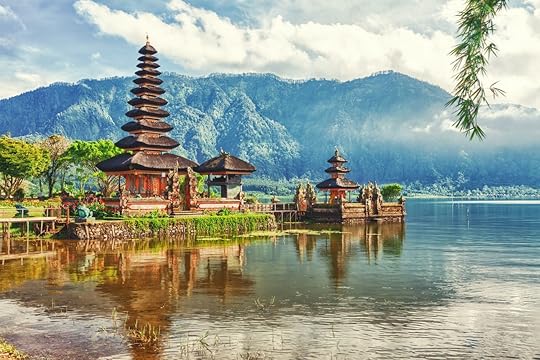
Bali, the popular Indonesian vacation destination, is suffering from its success. According to The Jakarta Post, the island hosted 5.7 million international visitors in 2017, causing a major strain on its beautiful environment. Tourists, when they come by the millions, create an awful lot of waste, burden the sanitation resources, and make the natural landscape vulnerable to erosion.
As a potential solution, the Balinese regional government drafted a bylaw imposing a $10 tax on foreign tourists, to be charged upon leaving the country. “Contributions from tourists are needed to help us preserve our environment and culture. Tourists come to enjoy our environment and culture. Why not contribute to preserving it?” said Bali Legislative Council Speaker I Nyoman Adi Wiryatama.
Bali wouldn’t be the first to impose such a tax. Japan recently voted a “Sayonara Tax” into law for foreign travelers, wherein tourists are asked to pay around $9 upon leaving the country. That money is then put toward maintaining the country’s tourist infrastructure. The law took effect on January 7, 2019. 
H/T: CNN

More like this: 10 perfect spots in Bali to take incredible photos
The post Bali set to impose a tourist tax to keep the island pristine appeared first on Matador Network.

Get $100 voucher to San Luis Obispo

Visiting a beautiful Californian city, and making $100 in the process, is what we call a win-win situation. The coastal city of San Luis Obispo, California is giving 500 tourists $100 vouchers to visit for two nights this winter.
Located halfway between Los Angeles and San Francisco, San Luis Obispo, named one of America’s top five happiest cities by National Geographic in 2017, is the perfect overnight stop for travelers driving along the iconic Highway 1.
San Luis Obispo is a great spot for those who like to spend time outdoors hiking, mountain biking, and climbing, as well as wildlife viewing (there are plenty of southern elephant seals and California condors to spot in San Luis Obispo County). Visitors who are more into chilling with a beer or glass of wine in hand should know that wine country in San Luis Obispo County is Napa-level, with Paso Robles, Edna Valley, and Arroyo Grande recognized as award-winning American Viticultural Areas. The SLO Craft Beer Festival runs on February 22 and 23 — that’s what we call perfect timing.
To take advantage of the $100 voucher, you’ll need to be in the first 500 new bookings. The deal applies to two-night stays at any San Luis Obispo hotel from now through March 31, with blackout dates of February 16 and 17. To claim your voucher, simply visit the official website and follow the instructions. 
H/T: Lonely Planet

More like this: 12 ways a trip to California’s San Luis Obispo County will surprise you
The post This city in California will pay you $100 to visit and it’s wine heaven appeared first on Matador Network.

January 22, 2019
Dining at all-inclusive resorts

When I was 14, the food at Club Med was the greatest thing I’d ever seen.
Instead of the plates of carefully placed organic spinach salad and tabbouleh I was used to at home, I found endless bowls of spaghetti tossed in beef-filled tomato sauce. I had whole pizzas I could just take. Trays of cookies. A guy who’d cut me all the prime rib I wanted.
Seconds? Try ninths. My sister and I would compete to see who could eat more, piling each plate a little higher than the last. If I hadn’t been 14, I probably would have gained 30 pounds.
My parents, however, weren’t quite so excited. I remember lots of sad-looking salads and half-finished meat, with my dad mumbling stuff like, “I guess these French guys never learned how to grill.”
I never got it, but as I got older it made sense. All-inclusive food was designed for people who like large quantities of mediocre food, perfect for the teenage demographic. Not so great for grown-ups. But the Information Age has allowed people to improve their culinary tastes — demanding higher quality everywhere from neighborhood restaurants to Taco Bell — and now all-inclusives must do more than just put out enough chicken primavera to feed a wrestling team.
The internet creates a new generation of foodie-focused resorts.

Photo: Velas Resorts
“The access to the internet and more people traveling around the world was a breaking point for us,” says Chef Michel Mustiere, the culinary director at Velas Resorts, a collection of all-inclusives in Mexico. “People now are more demanding, and cuisine is a highlight and a way to connect with local culture. Foodie vacations and food experiences are growing, so we have to develop (a more) exclusive program.”
Velas might be the most extreme example of an all-inclusive going gourmet. Many of the restaurants at their resorts are the kinds of places you might only go on vacation for a special occasion. Places you’d likely drop $250-$300 a person for the privilege.
At Grand Velas Los Cabos, an eight- to 10-course tasting menu at Cocina de Autor comes to you from two-Michelin-starred chef Sidney Schutte. It’s also included in your nightly rate. The original Cocina de Autor at Grand Velas Riviera Maya was the first AAA-5 Diamond restaurant at an all-inclusive.
The resort also puts on an annual gourmet food festival at its resorts in Puerto Vallarta and Riviera Nayarit, where chefs from all over Mexico create a resort-based week full of tasting dinners, gourmet experiences, and grand tastings with free-flowing tequila. These weeks have become destination foodie vacations on par with New York’s Restaurant Week and the South Beach Wine and Food Festival.
The king of all-inclusives sets the industry bar high.
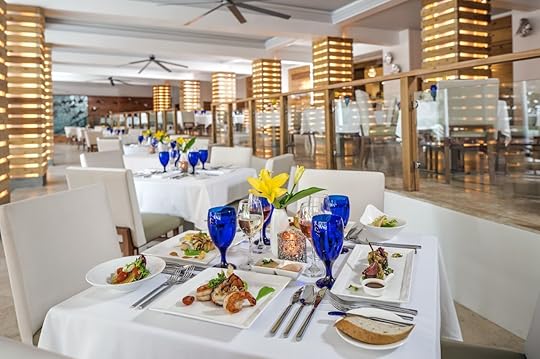
Photo: Sandals
The move toward high-quality food isn’t exclusive to the luxury sector, though. Sandals — the icon for mass-produced, sit-on-the-beach-and-do-nothing vacations — revamped its food program a couple of years ago to dispel its often-unfounded image of being a chain restaurant with lounge chairs.
The brand launched its 5-Star Global Gourmet program about two years ago, opening stand-alone restaurants at its resorts that feel more like the slightly Americanized ethnic restaurants you might find in your neighborhood. The company uses established restaurant consultants (California restaurateur Travis Kaenyama helped develop the sushi and teppanyaki concepts) and expat chefs to bring more authentic flavors to its restaurants. Malaysian and Filipino chefs run the show at the pan-Asian Chi. Indian chefs helm the Indian offering Bombay.
Because Sandals, like any large-scale enterprise, trades in mass production and consistency, the consultants and chefs work together, sometimes for months at a time to ensure that everything comes out exactly as intended. Corporate trainers spend all but about 60 days of the year on the road ensuring the food is up to par. The quality checks, especially on such a large scale, are remarkable.
“If you pay what you pay to come here, you expect quality,” says Sandals Barbados Assistant Food and Beverage Manager Junior Plummer. “I don’t think the expectation was low, but you do have people now who haven’t been to Sandals before who are pleasantly surprised by what we do.”
Are the restaurants actually good or just better than we expected?

Photo: Sandals
There is, of course, a large chasm between a restaurant being great and being great for an all-inclusive. Keeping this level of cynicism in mind I took upon the laborious task of spending a weekend in Barbados at the new Sandals Royal, trying every one of its restaurants to see if they were good or just the benefactors of low expectations.
From a décor standpoint, the restaurants nailed it. Each restaurant incorporated the nuances and details that make its off-resort counterparts so special. The koi-pond and blue-neon walkway to the teppanyaki concept Kimono felt like walking to a birthday dinner, as did the joyous noise and thick layer of spicy, greasy steam once you walked inside.
The booths at Butch’s Steak and Seafood were oversized and plush, and even a little sticky after a full shift of steak service. It smelled like that perfect combination of raw bar and raw meat you’d get at Smith and Wollensky or Lobster Bar.
Sandals even nailed the décor of a traditional English pub at the Merry Monkey, with pitched brown beams holding up the roof.
“They’re still missing the smell of spilt beer and sweat,” my friend who’d traveled through England extensively pointed out.
Bombay, the Indian concept, hit all the traditional Indian-American high notes like tikka masala, esophagus-burning vindaloo, and samosas, with two-top tables just a little too close to each other. A nice, authentic touch for those of us who’ve been forced to eavesdrop on Tinder dates at Indian restaurants back home. All they were missing was BYOB.
Sushi, which is exceedingly difficult to do well, was executed perfectly at Soy, where a yellowtail crudo with jalapeño and citrus sauce was as mild and sweet as I’ve had at $24-a-plate spots in Miami. The rolls exceeded what you’d find at most mid-range sushi places though they weren’t quite to the level of, say, Nobu.
Poolside pizza doesn’t need to be perfect, but the Italian stuff from Dino’s would have tasted good without the view of the Atlantic Ocean. It wasn’t on par with the wood-fired, Neapolitan-style, we-cook-your-pizza-in-30-seconds places that are all the rage, and the pies were a little over-cheesed and over-topped. But that might be more a case of playing to the crowd.
A jerk-chicken-and-pepper-topped pizza was the only hint I got of Caribbean flavor here outside the fast-casual Jerk Shack. That joint served up chopped chicken and fry bread in the same fast, delicious manner as you’d find in roadside shacks in St. Croix. There were even stray cats lingering by from the nearby neighborhood to give it an extra touch of reality.
Creating better food as a competitive advantage

Photo: Barceló Hotel Group
The restaurants at Sandals Royal Barbados didn’t disappoint, even a little, but I wasn’t pleasantly surprised since Sandals had talked it up to me plenty. That said, many who have the expectation of mediocre food at all-inclusives might be, including the chefs themselves.
“I’ve always thought that all-inclusive hotels were really poor quality… just cheap places where people don’t care about the food,” says Alejandro Sanchez, a chef and the Culinary Directory for Barcelo’s Royal Hideaway Playacar in Riviera Maya, Mexico. “Especially in Riviera Maya, where people just come for the sun and the beach and nobody’s concerned with the food.”
In Barcelo’s case, the resort saw this perception as a way to create a competitive advantage; by including stuff like a five-star Italian restaurant and a Mexican option focused on Mexican fine dining, it could offer an experience all-inclusive travelers don’t usually find. It’s part of the reason the Royal Hideaway is now part of the Leading Hotels of the World.
“I think now everybody wants to be better,” Sanchez says. “Every day people are more concerned with healthy food and quality produce. People have much more information. So people want to eat better. Now we have repeat guests who come here from word of mouth with a high expectation of the food quality. So that’s changed.”

Photo: Barceló Hotel Group
Much like with traditional restaurants, the bar for all-inclusive food has been raised considerably since my days of crushing an entire chafing dish of chicken marsala. If that’s still your expectation of food at the Sandals of the world, ask someone who has visited one about how well they ate. They’ll probably say the food was “surprisingly great.”
Or, god forbid, try one yourself. It’s a way to explore new food without much risk, since if you don’t like something you can try 100 other things without having to pay for it. The preparations, though excellent, still cater to Americanized tastes — and make for a vacation you’ll enjoy well past the age of 14. 

More like this: Why cruising is an unexpectedly awesome way to see Hawaii
The post Food at all-inclusive resorts isn’t just edible now — it’s actually amazing appeared first on Matador Network.

The best (and worst) airline food
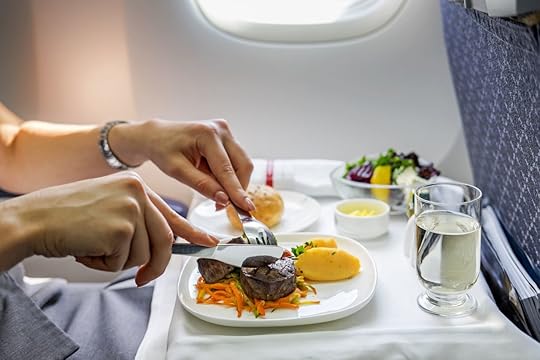
Airlines aren’t known for their culinary prowess. Putting the words “airplane” and “food” together inspires a mental image of mystery meat and peas stuffed into a tinfoil tray. But for one man, the meals are the inspiration behind a dedicated food Instagram and blog.
Nik Loukas has been reviewing airline meals on his blog, Inflight Feed, and Instagram of the same name since 2012. Over the past seven years, he’s flown on (and eaten on) more than 500 flights, consuming everything from sushi to steak at 30,000 feet. His Instagram bio says it best for his more than 25,000 followers: “Travelling the world eating airline food. Info and reviews for passengers on what to eat on over 150 airlines.”
It’s safe to say that few, if any, people are more knowledgeable when it comes to all things airline food. We caught up with Loukas for some insider tips on how to eat like royalty on an economy-class budget.
Interview has been edited for clarity and length.
What inspired you to start InFlight Feed?
I was working at an airline, and we made some changes to our inflight catering — changes that included not accepting cash as a form of payment. People were jumping on flights and complaining that our cabin crew wouldn’t take their money. The more complaints kept rolling in, the more I wondered why this information wasn’t made public prior to the flight.
As I researched airline food options, I found that there wasn’t a lot of information available about what you can eat in flight. I started to gather all this information and launched the site in early 2012, and it’s now grown to what it is today.
Why do things taste different at higher altitudes?
Research has shown we lose about 20-30 percent of our sense of taste at higher altitudes, which also impacts how we experience sweet and salty flavors. It’s all due to the pressure and the noise. Some researchers say you should listen to music to drown out the noise of the engines to improve the taste of the meals.
How do you get the best meal while flying without paying extra?
Fly with an airline that cares about its in-flight service. There are plenty of airlines that offer great economy-class meals. Look out for curries on the menu. Curry is one of those meals that travels very well because the altitude enhances the flavor of the meal.
Oh, and order a tomato juice. Trust me, it tastes great at 35,000 feet! Again, it’s due to the altitude. Things like cardamom and lemongrass also become extra intense, so if you see these ingredients on an inflight menu, order them.
View this post on InstagramA post shared by Inflight Feed (@inflightfeed) on Nov 12, 2018 at 5:37am PST
Another tip: I’ve heard of people taking their own Tabasco sauce on a plane. There are also those little mobile foodie survival kits that have sea salt, black pepper, cayenne, onion, basil, and other herbs.
Try to sit at the front of the plane, as well. Choices tend to run out by the time the crew gets to the back of the plane.
What are your top tips for getting the best meal if cost isn’t a factor?
Upgrade your meal if you can. The quality of the food is so much better than the standard economy-class meals. For example, one of the Air France meal upgrade options currently includes a dish that’s been created by the famed Lenôtre culinary empire from France. Add an exit row seat to the mix, and you’ve got yourself a quasi-business/premium economy-class experience.
What’s the best inflight meal you’ve ever had?
View this post on InstagramA post shared by Inflight Feed (@inflightfeed) on Jun 1, 2017 at 4:33am PDT
My Hello Kitty Kids meals on the Eva Air Hello Kitty Jet. Imagine a guy in his 30s receiving a kids’ meal. The cabin crew thought it was hilarious. In fact, some of my best meals have been on Asian airlines.
Which airlines serve the worst food?
I flew Air India a few years back in economy class from Delhi to Paris, and the food was just terrible. The portions were tiny. I couldn’t wait to get off the plane so I could eat something.
I recently flew with Scoot Airlines from Athens to Singapore in November and was left unimpressed. It wasn’t the taste of the food that upset me, it was how expensive it was. Granted, they’re a low-cost airline, and I only paid 200 euros one way for the flight, but the meal cost 35 euros! I really couldn’t see the value in paying so much for such a sub-par meal.
Which airlines serve the best food?
If you’re going economy class, fly Turkish Airlines. You’ll be pleasantly surprised. Their caterer, Do & Co, make some of the best airline meals in the world.
View this post on InstagramA post shared by Inflight Feed (@inflightfeed) on Dec 4, 2018 at 8:34am PST
Try Aegean Airlines in economy class on for longer flights. You’ll be rewarded with some great tasting Greek food. I also loved my economy-class meal on the Russian airline Aeroflot. Air Asia has tasty and very cheap airline meals too.
View this post on InstagramA post shared by Inflight Feed (@inflightfeed) on Mar 9, 2018 at 12:45am PST
Are there ever any items on the menu you avoid?
I think fish can be hit or miss. I’ve had some great fish dishes, but I’ve also had some shockers. It can dry out during the reheating process. I always try to stay away from the bread, as well; it really bloats!
Do you have any other projects in the pipeline?
Last year I finished filming a six-part documentary called The Inflight Food Trip. We traveled the world for about 1.5 years (on and off, not at once) visiting various airlines and their in-flight caterers.
We interviewed people, got to really see how the meals are made, how cabin crew are trained, and so much more. It was a real eye-opener. This year, I’m planning on rolling out a number of events for my followers as a way to say thanks to them. I’m still trying to work out the logistics, but it’ll definitely include airline food! 

More like this: The best (and worst) drinks to order on an airplane
The post The best (and worst) airline food in the world, according to a pro airline food reviewer appeared first on Matador Network.

China proposes child-only train car

Everyone knows what it’s like to ride a train and roll their eyes at misbehaved children darting up and down the aisles, throwing their toys, or screaming at their parents. In China, many passengers have had enough. The idea of introducing “child-only train cars” — designated for young children and their parents — has gained a lot of traction recently, especially as it’s been discussed widely on Weibo, China’s version of Twitter. People are mainly fed up with what the Chinese call “bear children” — a not-so-polite term for spoiled children who misbehave in public.
Those who support the idea have made their voices heard on Weibo. “What most people are afraid of on a train,” said one Weibo user, “is noisy children.” “I can’t even imagine,” said another user, “…a carriage full of bear children.” Some don’t believe there would be a problem with excessive noise coming from the carriage, and the children would be occupied with their new playmates. Others, however, think it’s a lazy solution and that parents should better control their children.
Huang Xin of China Railway Corporation told local news that while she is certainly open to creative ideas, child-only cars might not be the answer. “There are people suggesting that those who like to watch films or listen to music should also be concentrated in one department,” she says. “These suggestions provide inspiration for the improvement of the public transportation sector but also bring new challenges about how we can further improve and refine the services of public transportation.” 
H/T: BBC News
The post China proposes ‘child-only train cars,’ and people are divided appeared first on Matador Network.

Sights in West Lothian, Scotland
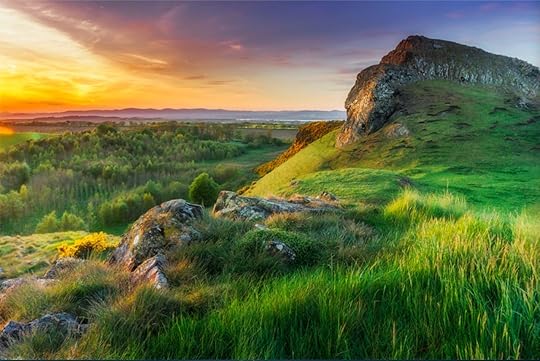
Travelers visit Scotland to experience rugged landscapes, ancient history, and unique culture. While West Lothian has all this, its location between Edinburgh and Glasgow means it’s often bypassed in favor of the bigger cities — despite being located just off the M8 motorway. Sculpture gardens, award-winning theaters, famous movie locations, and royal palaces await those willing to make a pit stop, and if all this isn’t enough, it’s also home to a famous queen, a Time-Lord, and a global singing sensation. Here are the best things to do in West Lothian.
Study up on your Scottish history at key historical landmarks.

Photo: Heartland Arts/Shutterstock
The West Lothian region plays an important role in Scotland’s history. Linlithgow Palace, in the town of the same name, is the birthplace of its most famous monarch, Mary, Queen of Scots. Mary became Queen of Scotland in 1542 at just six days old. Back then, being a Scottish monarch wasn’t a great career move, and Mary lost her head at the hands of the English in 1567.
Also in the area is Torphichen Preceptory, the location of the last parliament of William Wallace, of Braveheart fame. The only surviving example of his renowned signature is on documents he signed while working there. King George IV also once passed through, and at the request of Ivanhoe author Sir Walter Scott, he departed from Scotland wearing a kilt.
Scotland’s finest stately home, Hopetoun House, sits near the banks of the River Forth and looks towards the Forth Rail Bridge, a . Legendary Scottish architect William Adam was responsible for the home’s design, and though he is the brains behind many famous attractions throughout the nation, Hopetoun is his only local work.
Enjoy a true taste of Scotland.

Photo: Star and Garter, Linlithgow/Facebook
West Lothian delivers all of the quirky Scottish food and tasty booze you’d ever want to try. The Champany Inn is famed for its Scottish steak and burgers and is a very popular haunt among locals. If fusion cooking is more your style, The Bay Tree Restaurant combines Indian and Scottish ingredients to produce a mean haggis pakora. Those who crave sugar can hang out at Cupcake Cafe Bar, where you’ll find a multitude of cupcakes in ever-changing flavors. The owner has an absurd amount of awards and has baked for Queen Elizabeth II and the King and Queen of Monaco, so you know you’re in for a treat. For lovers of beer and liquor, the microbrewery at The Star and Garter produces a range of local ales for tasting while the Black Bull Inn offers more than 100 whiskeys without the big-city prices found in Edinburgh and Glasgow. If you’re after the infamous battered Mars Bars, though, they’re actually pretty rare — but you can have your pizza deep-fried or opt for cheese and chips as a topping.
Talk to the animals.

Photo: Tom Eversley/Shutterstock
Five Sisters Zoo is home to hundreds of weird and wonderful creatures, and it’s also an established sanctuary for mistreated animals. Over the past five years, it has built huge, custom enclosures to house six carnival bears and three circus lions rescued from across Europe. The Scottish Owl Centre sits within Polkemmet Country Park and is home to more than 100 species of the nocturnal bird. Regular flying shows and displays educate and excite visitors, particularly when the Eagle Owl — the largest in the world — comes out to play. If lions and bears aren’t your bag, then Almond Valley Heritage Centre just might be. Harmless goats, sheep, bunnies, and ducks are among the residents you’ll find on the farm. The stars of the show, however, are the Highland Cow and the Shetland Pony — the iconic symbols of Scotland. Also on the farm, Almond Valley’s museum tells the story of West Lothian’s shale mining industry and the role of Scottish chemist James Young, who pioneered the extraction of paraffin from coal and oil.
Explore film locations and see famous faces.

Photo: Dougie Milne Photography/Shutterstock
It might be but a “wee” part of Scotland, but West Lothian holds its own for famous residents and filming locations. Fans of the TV show Outlander will instantly recognize the exterior of Midhope Castle. The small rural castle doubles as Lallybroch, the home of the show’s Fraser family. 2018’s Outlaw King, starring Chris Pine, filmed scenes at Linlithgow Palace and Muiravonside Park while Danny Boyle and the gang hit up the town of Blackburn to film scenes for Trainspotting 2.
The region is also the birthplace of David Tennant from Doctor Who, Formula 1 driver Paul di Resta, and Ryder Cup players Bernard and Stephen Gallacher. Acting and sports aren’t the only avenues for local children, though. Politician and former Scottish First Minister Alex Salmond is from the area, as is the global singing sensation Susan Boyle. It’s not uncommon to spot Susan walking around her home village, but unfortunately for visitors, she’s outgrown singing in the local pub.
Enjoy uniquely Scottish art and live performance.

Photo: clivewa/Shutterstock
Quell your artistic cravings and wander through local and international art exhibits at many venues across West Lothian. The open-air sculpture park and art gallery Jupiter Artland more than matches its big-city rivals, and the region’s main cultural venues — Howden Park Centre and Burgh Halls — offer a rolling program of shows and concerts. West Lothian is also well known for public artworks and has a total of 58 dotted across the region. A self-guided tour, Out in the Open, provides the location and background to each piece.
Increase your heart rate.
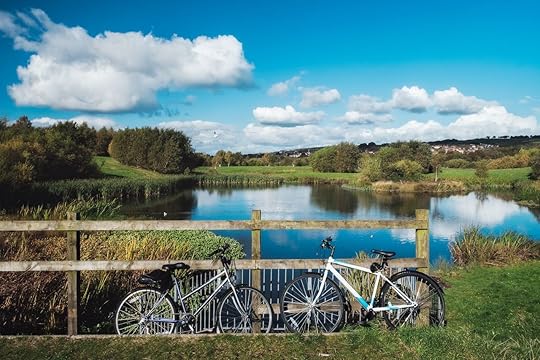
Photo: George.Bali/Shutterstock
Whether you’re an armchair sports fan or like to get in on the action, West Lothian will set your pulse racing. Scottish Premier League soccer team Livingston plays its matches at Tony Macaroni Stadium while the SGB Championship speedway team, Edinburgh Monarchs, races at Armadale Speedway. For a calmer pace, take in a competition at Scotland’s premier eventing arena, the National Equestrian Centre. You can actually put your swing to the test with one of Scotland’s biggest pastimes, golf, at several quality courses and driving ranges in the area — and don’t worry if your handicap isn’t on par with the locals. Get your hiking boots dirty in country parks or hop on your bike and ride the Scottish National Cycling Network routes that pass through the region. However, only the bravest visitors hire a kayak and take to the clear waters of Linlithgow Loch — because even the natives aren’t entirely sure how many loch monsters Scotland actually has. 

More like this: The tiny, secluded British islands that no one thinks of visiting
The post Why you should get off the motorway and visit Scotland’s West Lothian region appeared first on Matador Network.

How to visit Guatemala post eruption

The old town of Antigua in Guatemala, a UNESCO World Heritage site, is prone to natural disasters. It’s been the scene of earthquakes, floods, avalanches, and volcanic eruptions for centuries. Its unsafe location even lead to its demotion from the capital of the country in the 18th century — it was replaced by Guatemala City, the current capital.
Volcán de Fuego, an extremely active volcano, sits less than 10 miles east of Antigua. On June 3, 2018, its eruption killed 194 people and left hundreds missing. On November 19, 2018, the volcano erupted again and forced 4,000 residents to evacuate.
The June 2018 eruption was extremely destructive in rural areas as villagers who lived at the base of the volcano were caught by surprise. Guatemalan Ana Castillo, of The Heart of Travel tour group, reflects on that fateful day. “It was the most severe volcanic eruption we have ever lived through. We’re used to Fuego Volcano going off without causing any damage,” says Castillo.
“Poverty played a key factor in why the eruption was so devastating as people were living in dire conditions on the skirts of an active volcano. Tourists are never exposed to this kind of danger,” says Castillo.
How to travel to Guatemala seven months after the eruption
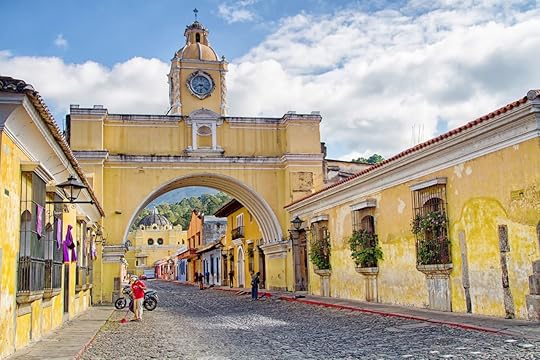
Photo: Milosz Maslanka/Shutterstock
Travelers should be aware that Guatemala is among the top four highest risk countries for natural disasters according to The World Risk Index. It’s best to be prepared in case there’s an emergency while you’re visiting Guatemala. While the possibility of a volcanic explosion is always possible, it doesn’t mean that travelers should avoid visiting Guatemala as a safety precaution.
On a daily basis, Fuego has around 25 small-scale gas and ash eruptions, but larger eruptions are rare. “I want people to know that regardless of this catastrophe, it’s safe to come to Guatemala,” says Castillo. A volcanic explosion is so unlikely that most locals seem unphased by the lava that can be seen spewing from Fuego at night.
Juan Marambio, Executive Director of the Latin American, community-based tourism group Travolution, understands why some travelers may feel nervous to visit an affected destination after a natural disaster. “Take precautions, but, unless flights are canceled, you shouldn’t fear heading into Guatemala because of the possibility of a volcanic eruption. Even if it happens, authorities will prevent tourists from being in the most dangerous areas or will quickly react to evacuate the population if the risk is too high.”
Marambio recommends that travelers should have some basic understanding of volcanoes before visiting Guatemala — especially if they plan to climb active volcanoes, such as Pacaya. It’s required to hike Pacaya with a local guide as they’ve been properly trained to know the terrain of the landscape, the volcanic activity, and are prepared for emergency evacuation. “Volcanoes are very beautiful and powerful phenomenon of nature. Approach them with respect and precautions,” says Marambio.
Responsible tourism is of the utmost importance as Guatemala begins to rebuild. “The most impactful action that travelers can take when visiting after a natural disaster is by contributing to the local economy. Making conscious decisions to support local businesses can help sustain affected communities directly. Travelers can also reach out to nonprofits working in the area to find out if there are urgent supplies that can be donated,” says Nika Hedrick of Impact Travel Alliance. Travelers can directly help victims by putting their tourism dollars directly into local hands by staying in homestays, hiring local tour guides, and eating at family-owned establishments.
Travel blogger Steph Dyson of Worldly Adventure visited Guatemala in October to partake in responsible travel experiences. “Tourism that involves local indigenous communities helps to boost the local economy,” she says. Dyson suggests having authentic cultural experiences with social enterprises such as the weaving cooperative of Santo Domingo Xenacoj where tourists learn how to weave ancient Mayan textiles and a homestay experience with the Rupalaj Kistalin cooperative. “Both allow for close interaction with indigenous Guatemalan people and the knowledge that your money is going directly into local communities where it’s most needed,” says Dyson.
Guatemalan Richard Chang Jonfe of sustainable tourism entity Guate4You organizes visits to the Santo Domingo Xenacoj, weaving cooperative and other genuine local experiences. He urges that “It’s important to always use local guides from the communities that you’re visiting because they’ll know the evacuation routes.”
What travelers can do to help Guatemala recover
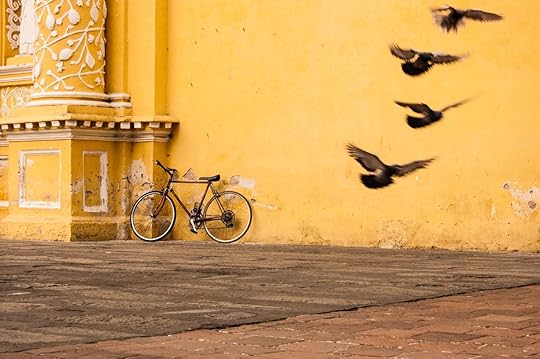
Photo: Lucy Brown – loca4motion/Shutterstock
As you explore Guatemala, the impact of the eruption on the landscape is vastly apparent. When heading down to El Paredon, a town on the Pacific coast about 65 miles from Antigua, to take part in the community-based tourism activities such as surfing and spotting sea turtles, or off to hike Volcán de Pacaya, you’ll drive by the base of Fuego. The area is desolate.
Seeing the disaster zone naturally encourages many travelers to get involved in supporting the local community. However, voluntourism should be avoided in Guatemala unless you have experience in providing international aid. “It isn’t in the best interest of local populations when unskilled and unqualified volunteers go to developing nations to volunteer for short periods of time, especially if they then post photos all over the internet that perpetuate stereotypes,” says Castillo’s business partner, Chelsea Glass. She recommends that skilled volunteers join a project with Volunca. The reputable volunteer program places skilled aid workers in disaster zones and has needs for help in shelters and victim recovery in Guatemala.
To make a direct contribution, consider donating to local groups that are working on long-term restoration. Antigua al Rescate is a grassroots organization that has been involved in relief work since the eruption and they still need support for aid efforts.
If you’d rather donate something other than money, Jonfe suggests that travelers support local communities by buying medication from local pharmacies as clinics are in need in the disaster areas. “Simple things like tampons, sanitary napkins, antibiotics, and plastic tubs for laundry are usually in short supply. People are still living in shelters here, and there is less and less help. The emergency has finished, but the rebuilding process has not kicked in,” he says. Guate4You organizes visits to La Trinidad, a community on which Fuego wreaked havoc in June. The cultural exchange allows travelers to learn directly from locals about the reality of how the volcanic eruption has changed their lives. 

More like this: How corn shapes every aspect of Q’eqchi life in Guatemala
The post How to travel to Guatemala in the wake of the Fuego Volcano eruption appeared first on Matador Network.

Renting a car in Morocco
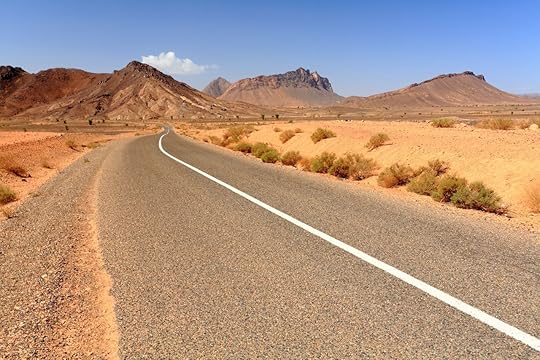
It’s about 250 kilometers from Merzouga, a popular tourist destination in the Sahara Desert on the Moroccan side of the Algerian border, to Boumalne Dades, a town in the middle of Morocco with a lovely little hotel. The drive takes about four hours.
Somewhere around hour one — 188 kilometers away from the hotel where we had a reservation, 400 kilometers from the nearest major city, and an unknown distance from the nearest English speaker — our car started to break down. On a bleak stretch of Moroccan desert road, my girlfriend and I suddenly felt very alone.
We received the first warning about 30 minutes after I accidentally drove into the middle of a market in Rissani, where the locals stared in disbelief as a stupid American tried to extricate a flashy new Peugeot from the produce stalls and crowds of camels. We naturally wondered if the small orange light on the dashboard indicated we’d accidentally kicked up something into the underside of the car during this escapade in the market. Or maybe it was a check engine light. Or maybe the windshield wiper fluid was low (admittedly unlikely in the desert). Or maybe it was nothing because the light disappeared a few minutes later — only to be replaced by another warning light, this time accompanied by a loud beeping alarm. New lights followed. Events sort of spiralled down from there.
I should have known the car was defective. Every tourist forum on Morocco suggested driving a manual, both because there were so few automatics in the country and because those automatics tended to be lemons, even when relatively new like ours. I should have known to run the car occasionally during our three-day stay in Merzouga, where the temperature easily drops below freezing each night. I should have known to brush up on my pitiful French before heading to a French and Arabic-speaking country or renting a French car, at least enough to read the driver’s manual. But the lesson that has stuck with me from this little incident, the one thing I couldn’t have known going in, is how utter vulnerability would transform the way I think about traveling abroad.
Smartphones, portable chargers, and nearly omnipresent Wi-Fi now make it possible to remain connected in some of the most remote regions on Earth. Translation apps bridge language barriers. Travel guides from websites like Matador, TripAdvisor reviews, and social media allow travelers to extensively plan any trip off the grid. Even when the signal does go out, Google Maps can track a phone’s location offline, making it possible to navigate without ever touching a paper map.
All of these technological innovations make countless travelers more safe, an undeniably positive evolution. But they have also taken away any sense of risk or vulnerability that can foster intercultural connections between visitors and locals.
Renting a car is one of the last vestiges of this vulnerability. There is no bus driver or train conductor to help get you to your destination should something go awry. While driving in the wilderness in many countries, you’re unlikely to encounter another English speaker. So when your car sends you multiple confusing alarms before ultimately shutting off completely, you have no choice but to rely on locals who can’t understand you and have little motivation to help you.
In our case, those locals happened to be the residents of a small Moroccan town that doesn’t appear on Google Maps at all. Before we reached town, the car alarm had screamed at us for kilometers. Every warning symbol on the dash had lit up, gone off, and lit up again. We had pulled over several times with no hope of discerning the cause. So perhaps it was a blessing that when the car finally decided to shut off altogether, it rolled to a stop right outside a small cafe.
It was mid-afternoon. Soccer played on the TV to an empty room. A man eventually emerged from a back room to see what we wanted, why we’d parked directly in front of his shop. It took about a minute to communicate that our car had broken down, but another 10 minutes for the man to try the ignition several times himself. Another local wandered in and decided to give it a go. When they both agreed the car wasn’t moving, the cafe owner called in a local mechanic.
Meanwhile we frantically attempted to contact the rental agency, not a major international chain but a local Moroccan business, with the cafe owner’s phone (an old school Nokia). When we did finally get in touch, the first thing the rental agency told us was not to let anyone touch the car. I looked over to see the mechanic elbow deep in the engine, pulling parts out left and right. By this point half the town had gathered to watch the scene unfold. The mechanic’s assistant had joined him, and a quorum of random strangers had assembled to give their input on the job too. Others wandered in and out to watch the soccer match. Pretty much all agreed, and told us in French and Arabic, that we should not have rented an automatic car. Everyone knows they’re trash.
Several hours and a lot of stress later, we learned through broken French and gesticulation that the car would run if we replaced a few parts and poured water into the radiator every 100 kilometers. The cafe owner helped the mechanic run up a bill for the parts, and he added a few massive water bottles to the bill so we could cool off the engine as we drove. He smiled as he handed over his handwritten check. The total came to about $25. We tipped well.
No one cheered when we drove away. The crowd we had assembled returned to their daily lives, returned to the match on TV, returned to business at the cafe, returned to the auto shop. I doubt they remember the two Americans who rolled their car into town on fumes and drove away a few hours later.
But I won’t forget them. We never exchanged names or backstories or interests, but for a few hours I had to absolutely trust these strangers in a strange land. Without digital aid, without language skills, without any other recourse, I felt a genuine connection to my hosts, whether they cared or not.
The car finally died the next day. It wouldn’t start in the morning despite the valiant efforts of another Moroccan mechanic. We hired a car to drive us to Marrakech where we caught a train and left behind our vehicular misadventure. Given everything, I would absolutely rent a car in Morocco again. Only next time, I’m learning to drive a manual first. 

More like this: How to enjoy travel without social media
The post My car broke down in the Sahara, and it taught me about trust appeared first on Matador Network.

Bikini Hiker dies after tragic fall

In a tragic incident this past weekend, a Taiwanese hiker known on social media as the “Bikini Hiker” was found dead in Taiwan’s Yushan National Park. Thirty-six-year-old Gigi Wu gained viral fame from posting photos of herself in bikinis on mountain summits, but she was also a seasoned hiker who always appeared to exercise proper safety precautions. The tragic fall occurred on the eighth day of a 25-day solo hike in Yushan National Park, home to some of Taiwan’s highest mountains. She called a friend to say she’d fallen down a ravine (about 65-100 feet) and was unable to move due to a leg injury. By the time rescuers were able to find her, however, she was dead.

Photo: Gigi Wu/Facebook

Photo: Gigi Wu/Facebook
A rescue helicopter tried to reach her three times but was prevented by inclement weather. Her body was eventually found two days later by rescuers on foot, who believe she died of hypothermia. Temperatures in the area had dropped to below freezing overnight.

Photo: Gigi Wu/Facebook
Since her death, thousands of followers have been commenting on her memorialized Facebook page to express their condolences. It’s also worth noting that she did wear appropriate hiking clothes while scaling mountains and only changed into her patented bikini attire once she had reached the top. 
H/T: BBC News

More like this: This hilarious Instagram account shows how unoriginal travel influencer photos are
The post Popular ‘Bikini Hiker’ dies of hypothermia after Taiwan fall appeared first on Matador Network.

Matador Network's Blog
- Matador Network's profile
- 6 followers



